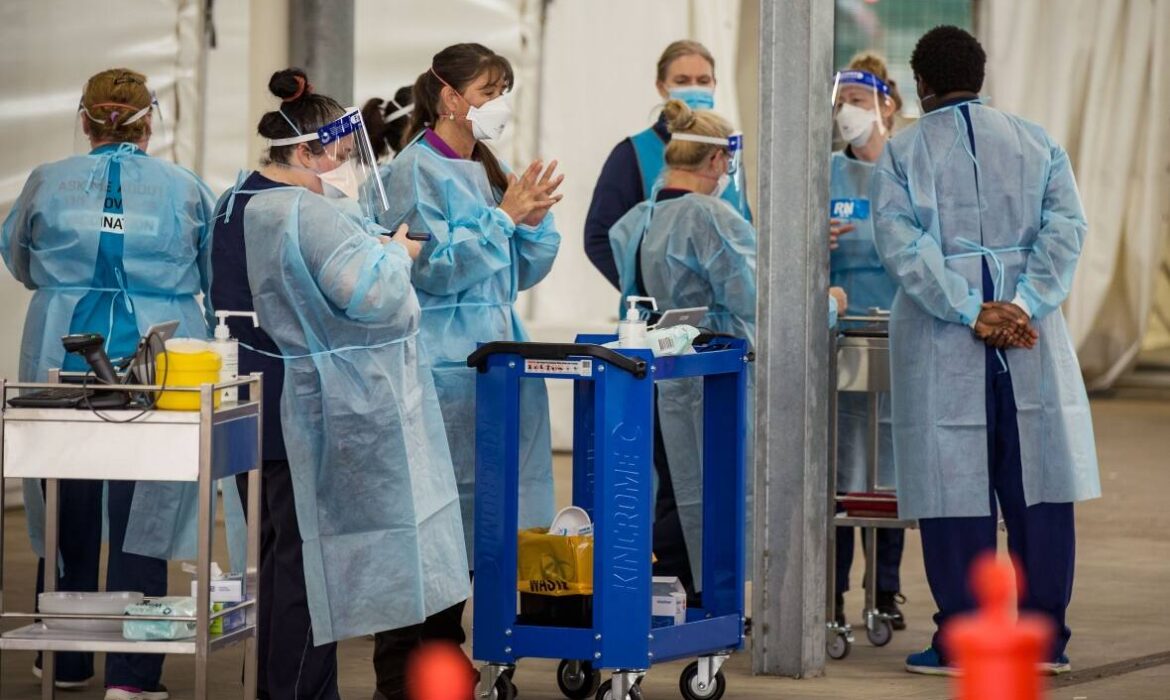
Within the complex and requesting world of healthcare, medical caretakers play a vital role. They are frequently the essential point of contact for patients, giving basic care, enthusiastic bolster, and vital wellbeing instruction. Be that as it may, an upsetting trend has risen in a long time: a noteworthy number of medical caretakers are clearing out the calling inside their to begin with year of hone. This mass migration not only impacts the healthcare framework but also raises genuine questions about the supportability and future of nursing as a career.
The alarming statistics
Think about demonstrating that between 17% and 30% of modern medical attendants leave their work during the primary year. This measurement changes depending on the nation, the particular healthcare setting, and the precise strategy of the thinkers, but the overarching drift is obvious: a considerable parcel of recently graduated medical caretakers are not remaining within the calling for long.
The Budgetary and Operational Impacts on Healthcare Institutions
The high turnover rate among unused medical attendants has noteworthy monetary and operational suggestions for healthcare education. The toll of selecting, preparing, and onboarding modern medical attendants is significant. According to the Diary of the Nursing Organisation, the toll taken to supplant a single nurse can range from $37,700 to $58,400. This budgetary burden is exacerbated when turnover rates are high, straining now-tight hospital budgets.
Operationally, high turnover rates can lead to staffing deficiencies, expanded workloads for remaining staff, and potential decreases in the quality of care. When modern medical attendants take off, the involvement and aptitudes they have started to create are misplaced, and the progression of care for patients is disturbed. This could lead to diminished understanding satisfaction and possibly antagonistic results, which could impact the notoriety and operational proficiency of healthcare education.
Reasons behind the mass migration
Understanding why so numerous medical caretakers take off the call inside the primary year is pivotal to tending to the issue. A few variables contribute to this slant:
- Working environment Stretch and Burnout: Nursing is an inalienably upsetting calling, with long hours, tall patient-to-nurse proportions, and enthusiastic requests. Modern medical caretakers, who are frequently still altering the substances of their work, can rapidly end up overpowered. The COVID-19 pandemic has exacerbated these conditions, including phenomenal levels of stretch and burnout.
- Need for Support and Mentorship: Modern medical attendants regularly feel insufficiently supported amid their move from instruction to hone. Mentorship programmes can be conflicting, and without legitimate direction and support, unused medical caretakers can feel disconnected and unsupported, making it more likely they will take off the calling.
- Insufficient Recompense: Numerous modern medical attendants feel that their compensation does not satisfactorily reflect the requests and duties of their work. When combined with the high levels of push and the requesting nature of the work, lacking pay can be a noteworthy figure within the choice to take off.
- Work-Life Adjustment: The requesting plans and long shifts can take a toll on nurses’ individual lives. Numerous modern medical attendants battle to discover a balance between their professional and individual lives, leading to disappointment and an inevitable takeoff from the calling.
- Instructive Obligation: The budgetary burden of nursing instruction can be considerable. Unused graduates regularly enter the workforce with a critical obligation, and in the event that they feel that their work does not yield an adequate budgetary return, they may look for other openings.
Methodologies for Holding New Medical Attendants
Tending to the high turnover rate among unused medical attendants requires a multifaceted approach that encompasses back, remuneration, and work environment enhancements. Here are a few techniques that can offer assistance to modern medical caretakers:
- Improved Support Systems: Implementing vigorous mentorship and support programmes can help unused medical caretakers move more easily into their roles. Blending modern medical attendants with experienced tutors can give guidance, support, and a sense of community.
- Competitive Compensation: Ensuring that unused medical attendants are reasonably compensated for their work is vital. This incorporates not only compensation but also benefits, rewards, and openings for headway.
- Work-Life Balance Activities: Healthcare teachers can execute approaches that advance way better work-life balance, such as adaptable planning, adequate time off, and measures to decrease extra time.
- Mental Wellbeing Assets: Giving access to mental wellbeing assets, counting guiding and stretching administration programmes, can help unused medical caretakers adapt to the enthusiastic and mental demands of the work.
- Proceeded Instruction and Proficient Improvement: Advertising openings for continued instruction and proficient improvement can offer assistance, making unused medical attendants feel esteemed and contributing to their careers. This may incorporate educational cost repayment, preparation of programmes, and pathways to specialization.
- Moving forward Working environment culture: Making a positive and comprehensive work environment culture where medical caretakers feel regarded, esteemed, and part of a group can altogether affect maintenance rates. This includes tending to issues like workplace bullying, separation, and cultivating a steady environment.
The path forward
The high turnover rate among unused medical attendants could be a squeezing issue that requires immediate and supported consideration. Healthcare educators, health staffing agencies, and policymakers must collaborate to create an environment where modern nurses feel bolstered, esteemed, and adequately compensated. By tending to the root causes of early flight from the calling and being ready to offer assistance, we guarantee that medical caretakers will not only stay in their roles but also flourish in their careers, eventually leading to way better, quieter results and a more resilient healthcare framework.
Conclusion
Holding unused medical caretakers isn’t about tending to prompt concerns; it’s about building an economical future for healthcare. By contributing to the well-being and proficient fulfillment of medical attendants, we contribute to the quality and adequacy of healthcare itself. This can be a challenge that requires collective exertion, but it is one that we must rise to meet for the purpose of our wellbeing frameworks and the well-being of patients all over.



